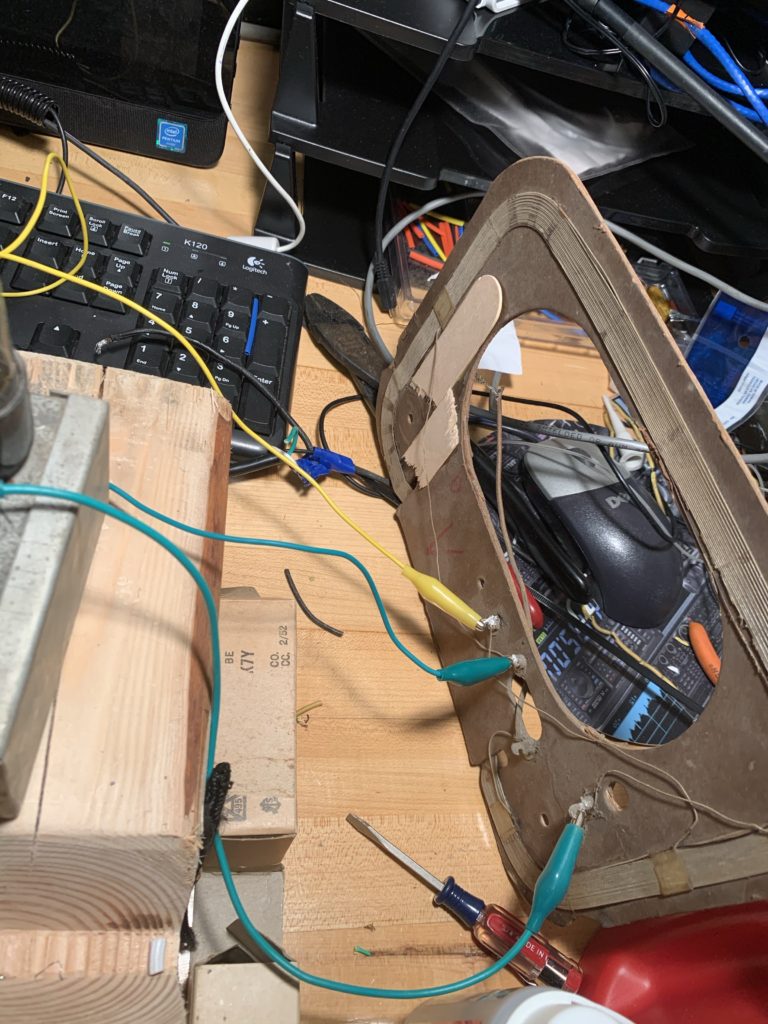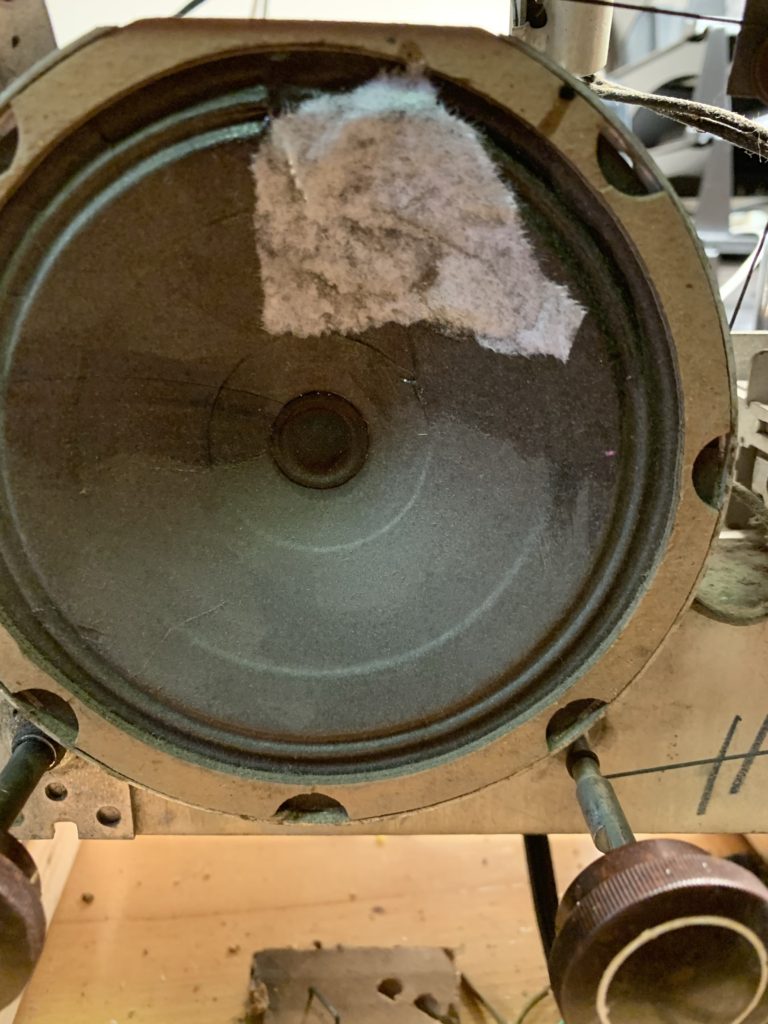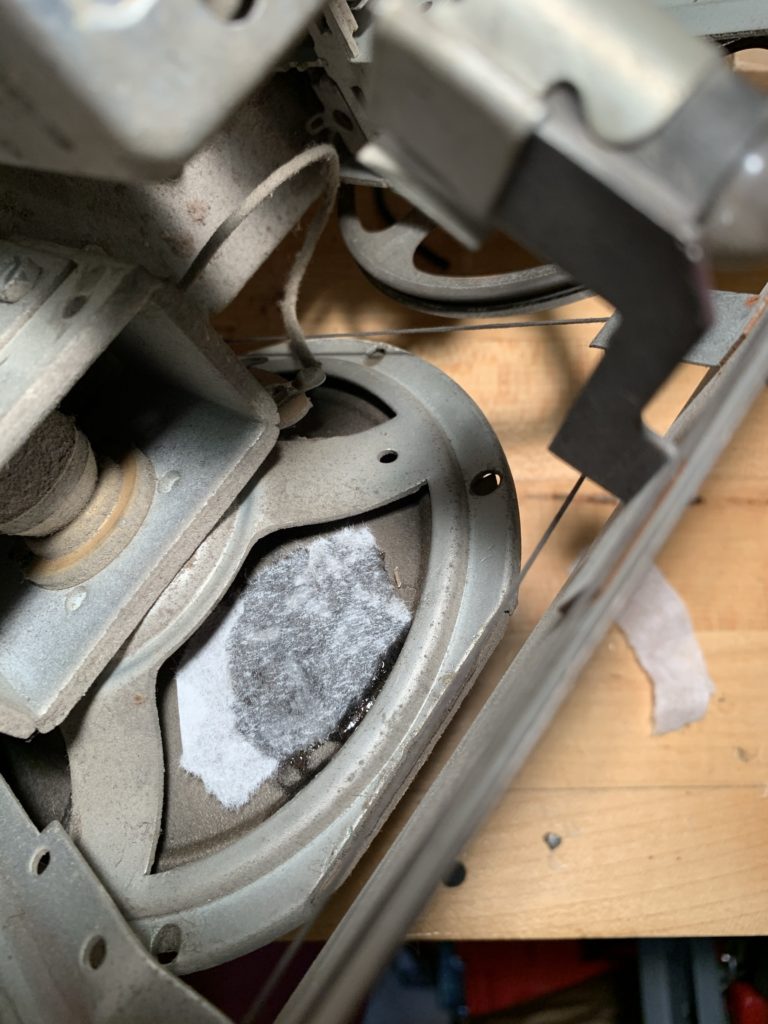There’s nothing really remarkable about replacing wires, except for the pile of insulation bits on the bench under the radio. It’s somewhat impressive when you consider those bits of insulation are 75+ years old.
I have been slowly threading wires through and replacing them one at a time. It does become a bit of an art to try and keep things neat, and there’s an added complexity factor when thermostat wire insulation melts so quickly… these radios were built in a point to point fashion by hand – a much different result than today’s pick and place machines with PCBs and tight circuit designs.
I have made some additional progress on that torn speaker cone. I did a LOT of research on what i could do to fix it, with the use of a Motorola communication speaker as a backup plan. This IS a permanent magnet set, so no electodynamic and field coil issues to fight with. And I had already ordered a couple big chokes to retrofit with. damn.
It would seem that Piliobond and coffee filters are the best patching materials for speakers. Many people use Elmer’s glue, but the consensus is that it dries hard, and isn’t ideal for this kind of work over time. A bit of research yielded a few people using rubber cement, too… so I went this route… and let’s face it, I haven’t been carded when buying anything lately. So, I used rubber cement and coffee filter.
No, it’s not the prettiest, but there will be a speaker grille inside the radio to hide the white filter, so it shouldn’t detract from the radio’s cosmetics too much.
I was a bit concerned about the results at this point, because it sounded a bit distorted and tinny – I thought maybe the rubber cement was too stiff when it dried – but messing with the antenna wire I had clipped to the main tuning cap made the sound change dramatically… I re-learned that the antenna loops are really part of the tuning circuit – so my receiver probably didn’t have an appropriate bandwidth for the AM station i was trying to receive.
I used some alligator clips on my bench to reconnect the original antenna board (Which has since been repaired through the use of wood glue and some popsicle stick splints on the inside), and was rewarded with a much richer sound.

Now, yes, it is a bit higher pitched – but remember, this is an AM-only set. By definition, the filters on the front end cut out part of the bass response during the carrier removal and demodulation process.
Work on the wood housing should begin soon… and I’ve only got one or two more wires to work on, in addition to figuring out why the tone control doesn’t seem to be affecting receive audio. it’s getting there!

